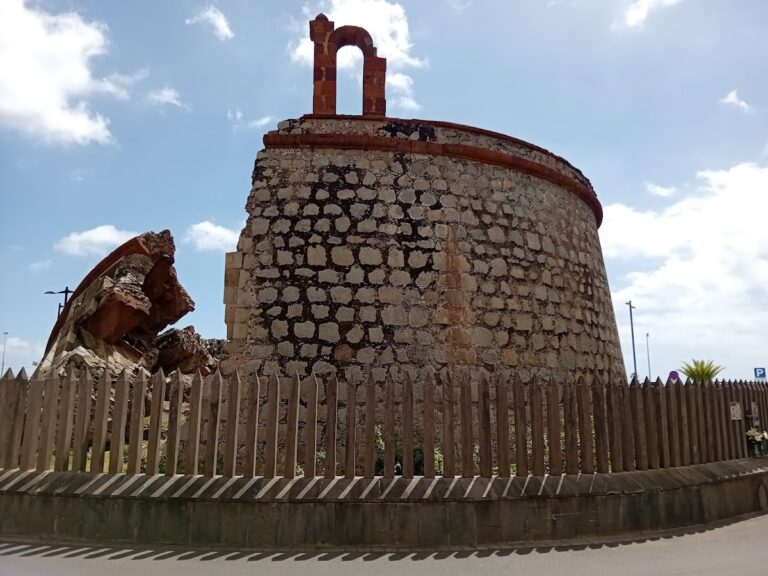Castillo de San Felipe: A Historic Fortification in Puerto de la Cruz, Tenerife
Visitor Information
Google Rating: 4.3
Popularity: Low
Google Maps: View on Google Maps
Country: Spain
Civilization: Unclassified
Remains: Military
History
The Castillo de San Felipe is located in the town of Puerto de la Cruz, on the northern coast of Tenerife, Spain. This fortification was originally built by the Spanish in the late 16th century to defend the port and surrounding area from pirate and corsair attacks.
Construction began in 1599 on the site of two earlier cannon platforms, which had successfully repelled an assault involving five pirate ships. Completed in 1604, the castle was one of four fortresses designed to protect the town, strategically positioned to guard the port’s landing zone against invaders seeking shelter or plunder. Over the years, it served as an active military base, with numerous commanders overseeing its defense. Among these early officers were Captain Juan Antonio de Franchy, appointed in 1644, followed by several others including Diego Benítez de Lugo, Lorenzo Perera de Ponte, and José Agustín Machado Espínola, who took command in 1725. A total of fifty commanders are recorded, highlighting the fortress’s ongoing military significance.
By the 19th century, the castle showed signs of deterioration, prompting restoration efforts. Its military role diminished over time, and in 1878 the fort’s artillery was removed. Control passed to the local municipal government, which repurposed the structure as a lazaretto—a quarantine station for maritime travelers—and an infirmary. After decades serving these public health functions, the castle officially closed for such uses in 1924, as it no longer met modern military requirements.
At the close of the 20th century, the castle underwent extensive renovations that transformed the historic building into a cultural center. This adaptation allowed it to host concerts and art exhibitions, serving the community in a new capacity. Recognizing its historical and architectural importance, the Castillo de San Felipe was declared a Protected Cultural Heritage Site (Bien de Interés Cultural) in 1949, a status reaffirmed by the Spanish Historical Heritage Law in 1985.
Remains
The Castillo de San Felipe presents a distinctive pentagonal layout constructed primarily of masonry in a refined colonial architectural style. This fortified structure was originally encircled by a protective moat and accessed via a drawbridge, designed to control entry and enhance its defensive capabilities. Over time, the drawbridge was replaced by a permanent fixed walkway, maintaining access while reflecting changes in defensive needs.
The castle rises two stories high, with the upper level planned to house roughly 35 soldiers during its operational peak. Its original armament included three iron cannons: two weighing 24 pounds each and a smaller 16-pound piece, providing a powerful artillery presence to guard the maritime approaches. The building visible today largely reflects the restoration work carried out in the 19th century, which stabilized and preserved its essential features.
Nearby, approximately 50 meters from the main fort, stands the Polvorín, the old gunpowder magazine. This subsidiary structure was designed for the safe storage of explosive materials, integral to the castle’s defensive function. The Polvorín remains preserved, offering insight into the logistical arrangements required for maintaining the fortress’s armaments.
Throughout its history, the Castillo de San Felipe has adapted to various roles beyond military defense. After its decommissioning as a fortress, it functioned as a lazaretto and infirmary before housing a shooting society and later serving as a restaurant. These successive uses demonstrate the building’s structural resilience and its continuing relevance to the local community. Today, the preserved fort and surrounding remains stand as a testament to the layered history of Puerto de la Cruz’s coastal defense system.







